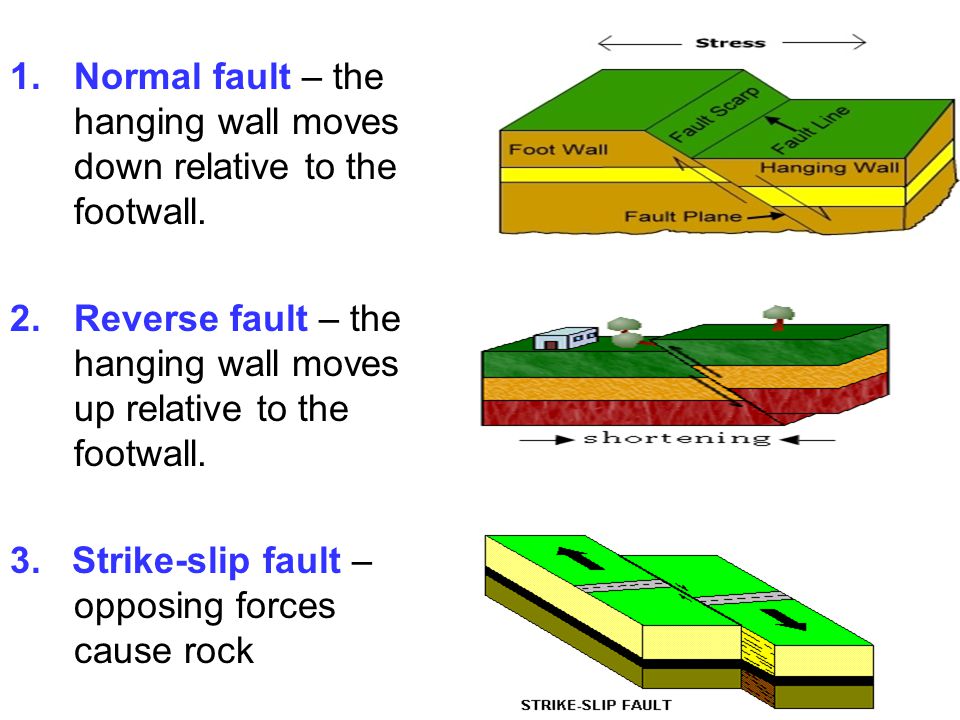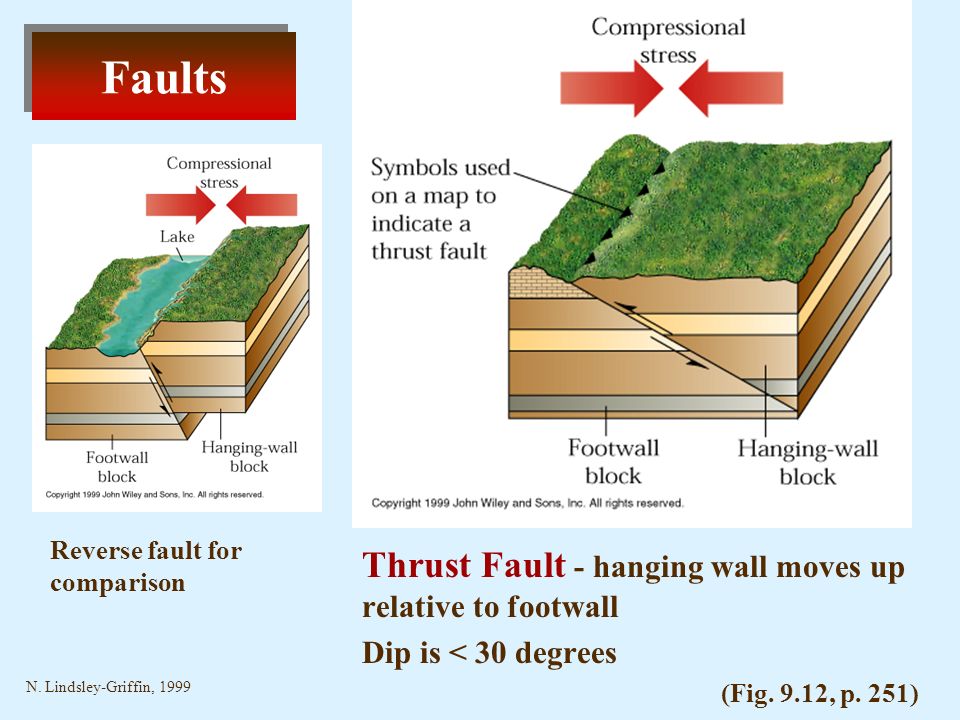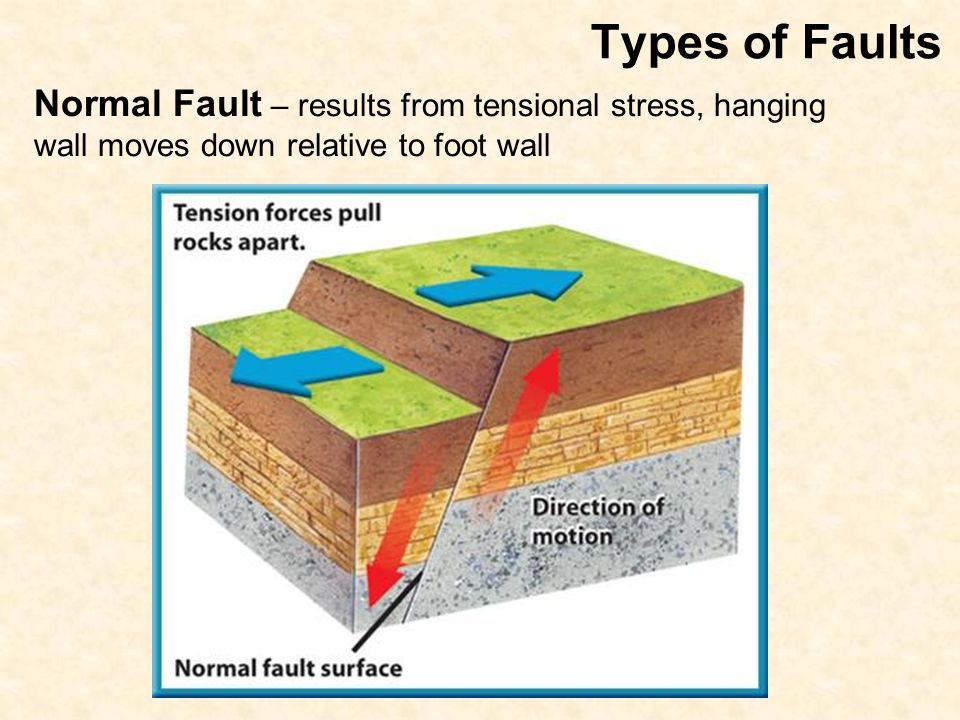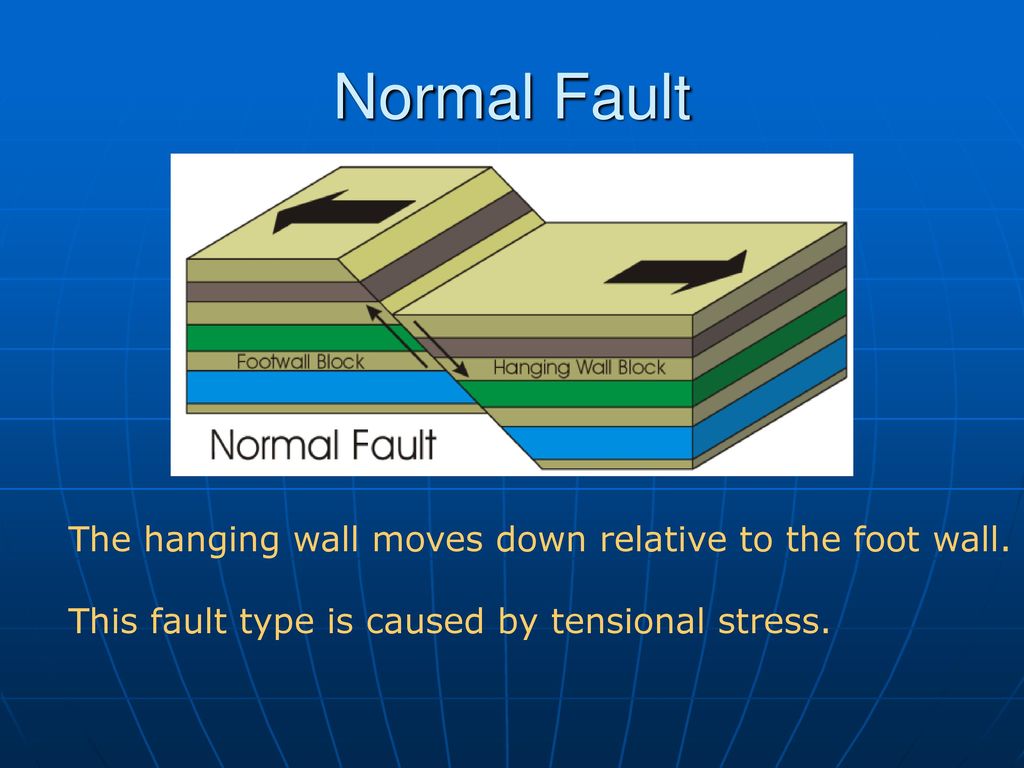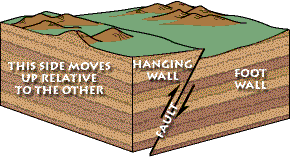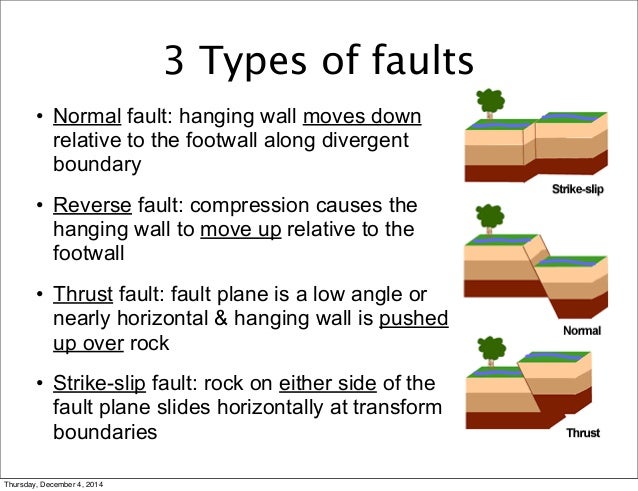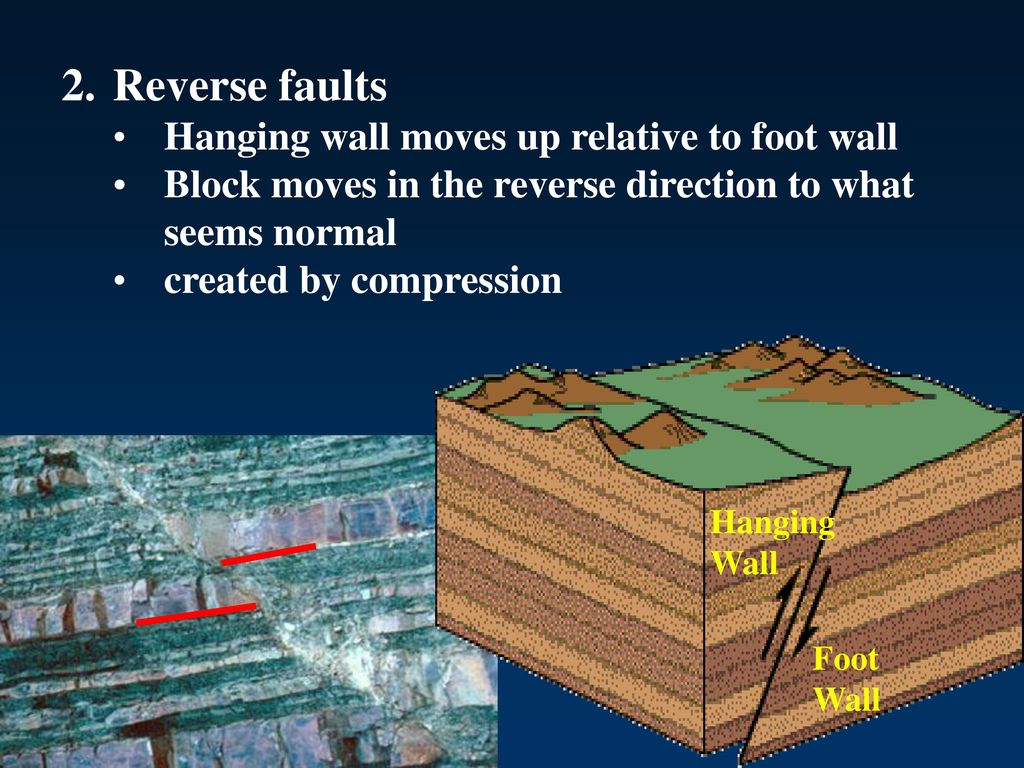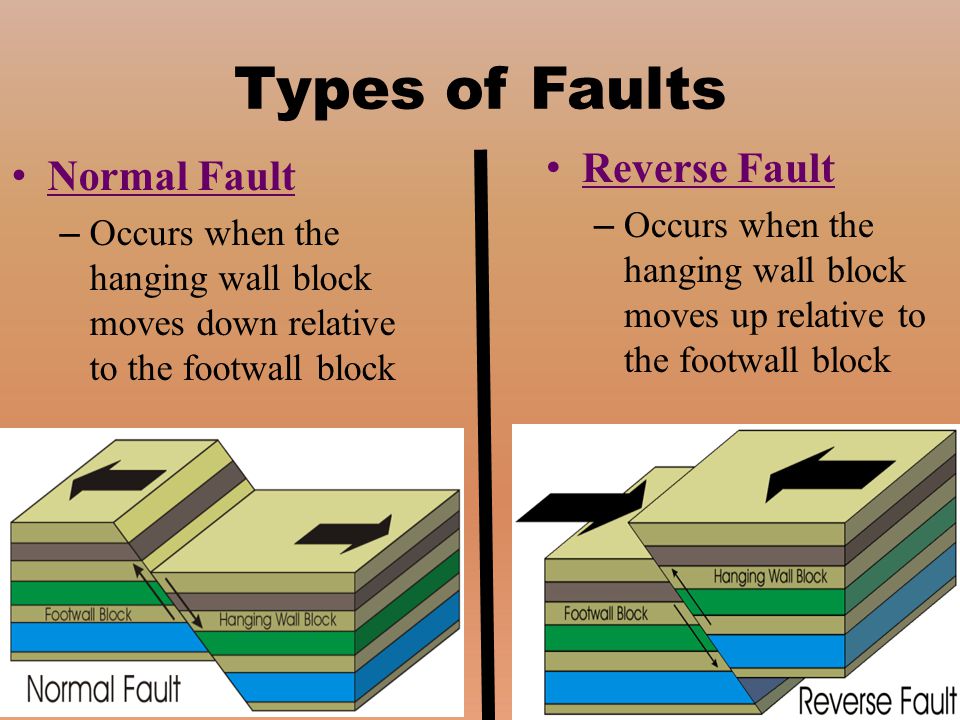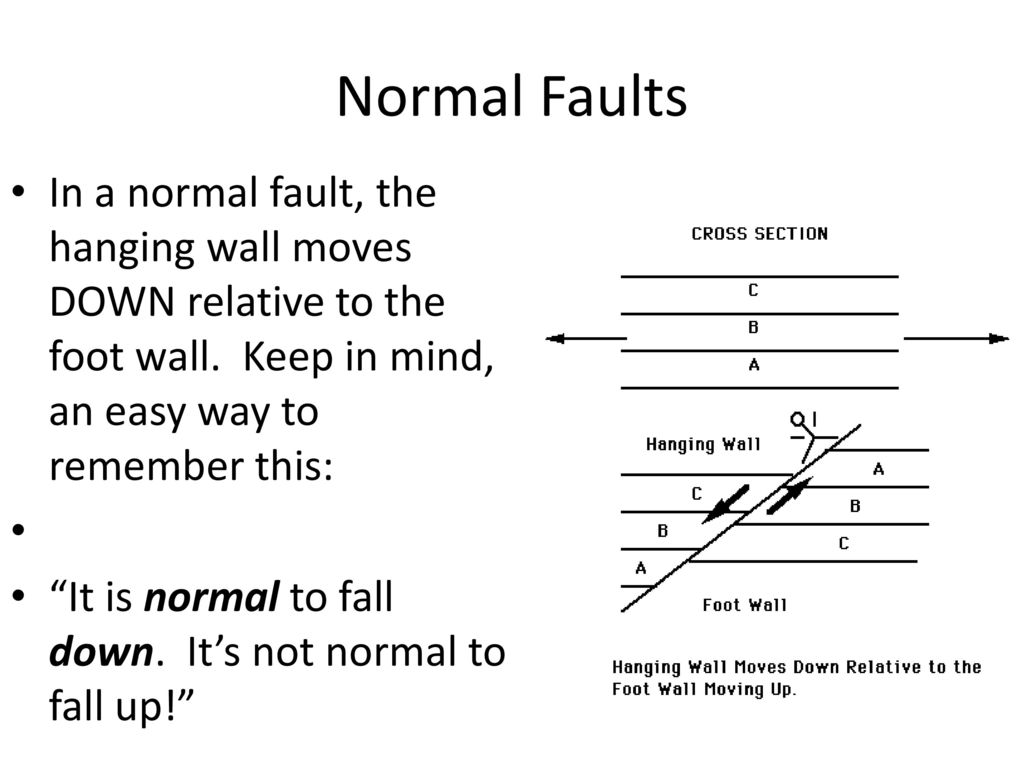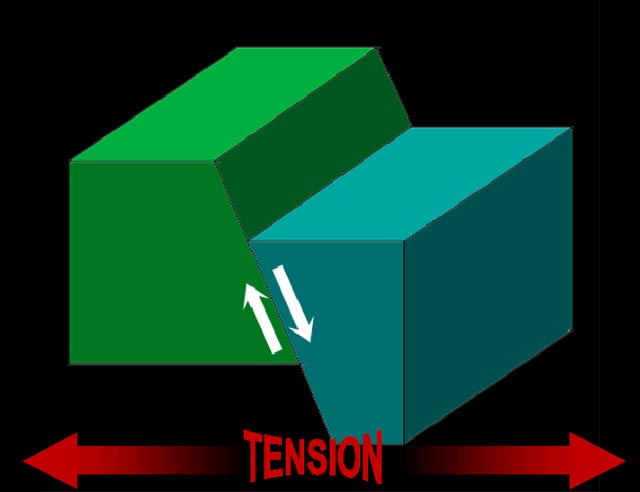In A Fault The Hanging Wall Moves Up Relative To The Footwall

Fill in the blank 1.
In a fault the hanging wall moves up relative to the footwall. What is the age of the rocks on the surface of the footwall side of the fault relative to those on the hanging wall. Reverse faults indicate compressive shortening of the crust. This is true of normal faults. In thrust or reverse faults the hanging wall moves up relative to the footwall and in strike slip faults it moves horizontally relative to the footwall.
Describe three types of faults. After the occurrence of a normal dip slip fault in flat lying sedimentary rocks the fault scarp produced is eliminated by erosion. A reverse fault is the opposite of a normal fault the hanging wall moves up relative to the footwall. When the hanging wall moves down in relative to the footwall it is called a fault.
This is true of normal faults. The terminology of normal and reverse comes from coal mining in england where normal faults are the most common. These usually occur when tectonic forces cause tension that pulls rocks apart. When the hanging wall moves up in relative to the footwall it is called a fault.
To the dip is called dip slip faulting. The hanging wall moves down relative to the footwall. The dip of a reverse fault is relatively steep greater than 45.









